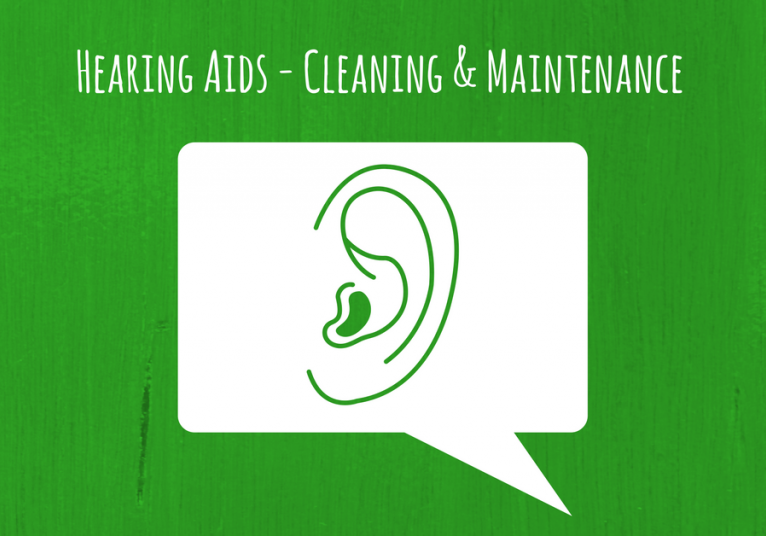
Hearing aids are a significant investment, so it’s good practice to learn how to clean and maintain them at home. These sophisticated, tiny marvels of technology operate in conditions that are far from ideal: the inside of your ear canals where they are subjected to earwax and moisture. Regular cleaning you can do yourself combined with routine maintenance provided by your audiologist will give you years of better hearing.
Care Tips for Hearing Aids
- Get the proper tools: A wax pick and brush are indispensable tools for at-home cleaning. Earwax can accumulate in the opening at the end of a hearing aid where the Cleaning and hearing aid care
should be part of your daily routine.sound comes out causing muffled sound or feedback (whistling). Left long enough, it can damage the receiver. Use the pick and brush to gently clear wax away. - Establish good habits: Leave hearing aids out during your hygiene routine. Shower and wash your face and hair without your hearing aids in so water and soap can’t damage them. Put your aids in after you apply hair products like sprays or gels.
- Clean your device at the end of the day: Cleaning your hearing aids before bedtime gives them several hours to air out before you will put them in again. Avoid wipes with chemicals or alcohol when cleaning hearing aids as they could damage the devices.
How to Clean In-the-Ear Hearing Aids
When cleaning, follow these steps:
- Focus your cleaning on the openings in the device including the microphone ports using a soft-bristle toothbrush or a brush provided by your hearing healthcare professional to clear away built up wax. Hold the device with the opening you are cleaning facing downward so any loose particles will fall out of the hearing aid instead of staying lodged inside.
- Next, use a wax pick or hook to clear anything out of the holes that didn’t come out with the brush.
- Finish by wiping the entire device with a clean, dry cloth or tissue. This will remove debris from the case of the hearing aid.
How to Clean Behind a Hearing Aid
To clean, follow these steps:
- Examine the device for debris and remove it with a soft brush or a dry cloth.
- Remove the earmold or dome from the hook or speaker to clean it. Some of these, especially those made from soft materials, can become discolored and stain over time. Wiping them clean will help. Allow the molds to dry completely overnight before use, and do not use alcohol or other chemicals on them. If the dome has become discolored, replace it.
Additional Nighttime Considerations
- Keep the battery compartment open to dry overnight
- Brush the battery compartment with the cleaning brush
It may be worthwhile to use a hearing aid dehumidifier, especially if you live in a humid climate, spend considerable time outdoors or perspire heavily. There are two types of hearing aid dehumidifiers. One type is a simple plastic jar with a desiccant that draws out moisture overnight. The other type is a unit which uses ultraviolet light and air to dry and sanitize hearing aids. Both accessories are probably available through your audiologist.
Authored by Sarah Lundstrom, Au.D.

Text Size:
Request a Callback
Free Hearing Consultation
Hearing Test
You Might Be Interested in These Articles
Dr. Lundstrom’s Insights on Noise-Induced Hearing Loss Featured on Forbes
Dr. Lundstrom’s insights on noise-induced hearing loss were recently featured on Forbes Health! “While noise-induced hearing loss (NIHL)…
Read MoreFamous YouTuber, Mr. Beast Partners with Hearing The Call
What do you get when the world’s biggest YouTuber connects with Hearing the Call? Some of you may…
Read MoreDr. Lundstrom Featured on HealthyHearing!
Dr. Lundstrom’s insights on “Emergency Communication Tips” were recently featured on HealthyHearing.com! This article is a must read…
Read MoreRequest a Callback
It is often the small things that hold us back from making a decision. That’s why we are on hand to help.
Simply complete the Callback form to request a friendly, no-obligation conversation with one of our helpful team members.



